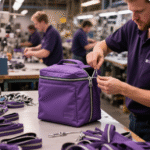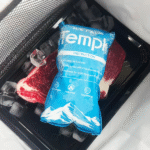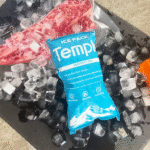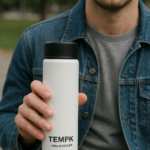Por que uma bolsa isolada ainda importa em 2025
A modern saco isolado uses layered foams, filmes reflexivos e revestimentos de grade de comida para diminuir o fluxo de calor, keeping contents ≤ 40 °F (4 ° c) for cold service or ≥ 140 °F (60 ° c) for hot service—both outside the USDA “Danger Zone.”
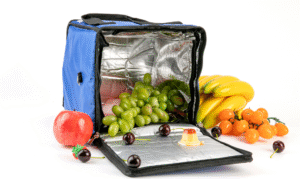
Lista de verificação de início rápido
| Etapa | Uso frio | Hot Use |
|---|---|---|
| Pre‑Treat the Bag | Freeze gel packs overnight and place them inside for 30 – 60 min to pre‑chill, or pop the whole bag in the freezer if space allows. | Insert a sealed hot‑water bottle or rinse the liner with 140 ° f água, then drain and close for 10 min. |
| Pack Smart | Use leak‑proof containers; place frozen packs on the laterais e superior so cold air sinks through food layers. | Put the hottest items in the centre; wrap them in a kitchen towel to reduce moisture build‑up. |
| Fill Ratio | Mantenha pelo menos 25 % of the bag’s volume as cold mass (gel packs or frozen bottles) to reach full‑day performance. | Use an insulated divider to separate very hot items from ambient‑temp snacks. |
| Minimise Opening | Plan grab‑order in advance; every open can cut hold time by 20 %. | Same rule—heat escapes upward faster than cold. |
| Extra Insulation | Add a reflective foil pouch or towel around delicate foods for another 10 – 15 % hold‑time boost. | Line the base with a small cutting board to act as a heat shield. |
| After‑Use Care | Wipe the liner with mild soap, air‑dry fully, then store unzipped to prevent odour or mould. | Same—plus inspect seams for starch build‑up from soups or sauces. |
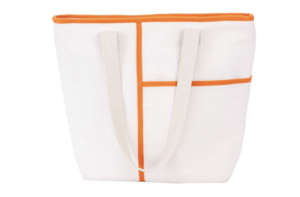
Deep‑Dive Practice—Expandable Tips
Pre‑Chill vs. Pre‑Heat
The greater the delta between bag wall temperature and target food temperature, the faster heat flows.
A 30‑minute pre‑condition can extend safe hold times by até 50% during hot‑weather outings.
Layer Like a Pro
Alternate cold packs and food to build “cold walls,” keeping frozen packs against the bag sides and a thin layer on top—because Air frio afunda while warm air rises.
Block + Gel Combo
For multi‑day trips, place a solid ice block (or frozen water bottle) on the bottom for slow, sustained chill, then gel packs around fragile produce to prevent freeze burn.
Beyond 24 Hours?
Dry ice or completely frozen jugs outperform gel packs when journeys exceed one full day; follow ventilation guidelines and keep dry ice separated from fresh greens.
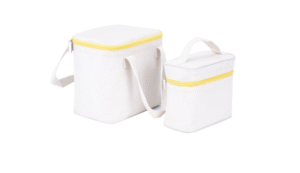
2025 Mercado & Instantâneo de Sustentabilidade
-
Impulso do mercado: O global sacos isolados market hit USD 15.31 billion in 2024 e está projetado para atingir USD 25.81 billion by 2032 (6.7 % CAGR).
-
Eco trends: Mono‑material PE foams introduced in late 2024 shave 30 % off end‑of‑life CO₂e versus multi‑layer PVC bags.
-
Crescimento regional: Asia‑Pacific holds 28 % share and is expanding at 7.2 % CAGR thanks to e‑commerce grocery demand.
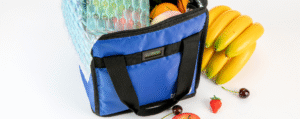
Perguntas frequentes
| P | UM |
|---|---|
| How long can an insulated bag keep food cold? | In 90 °F (32 ° c) sombra, a well‑packed lunch bag with two 8‑oz gel packs stays below 40 °F for 6 – 8 h; a grocery tote with 2 lb of frozen bottles can exceed 24 h. |
| Can I microwave the bag? | No—heat can melt internal foams; transfer food to microwave‑safe ware. |
| Are premium soft coolers worth it? | Lab tests show vacuum‑panel soft bags retain safe temps 40 % longer than budget PE‑foam models, but weigh 20 % more. |
| What about odors? | Add a spoon of baking soda to warm soapy water for a 15‑minute soak; rinse and air‑dry inverted. |
















